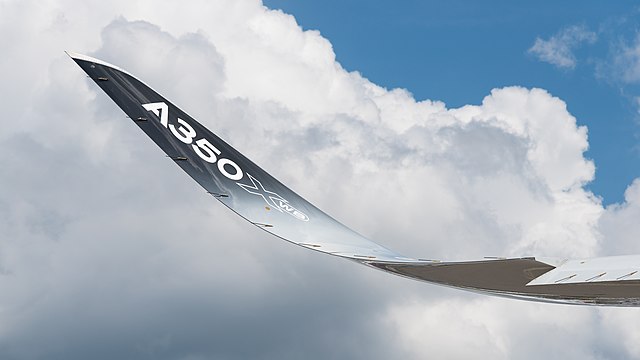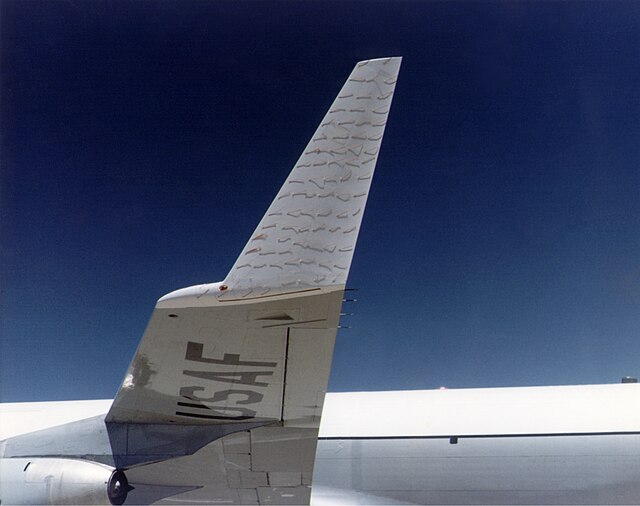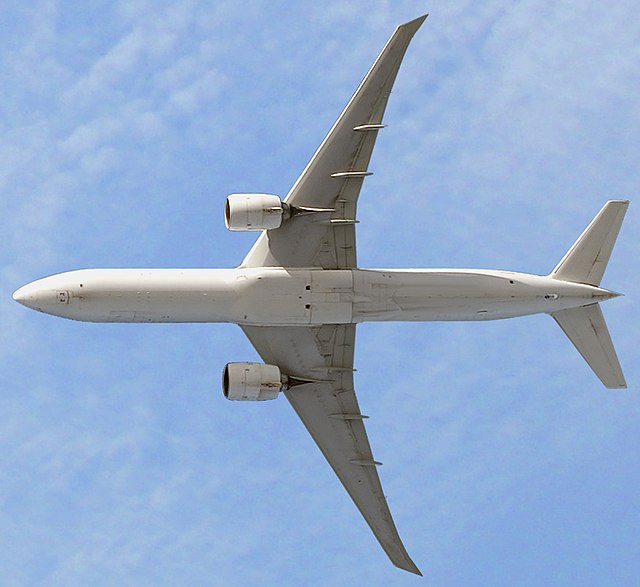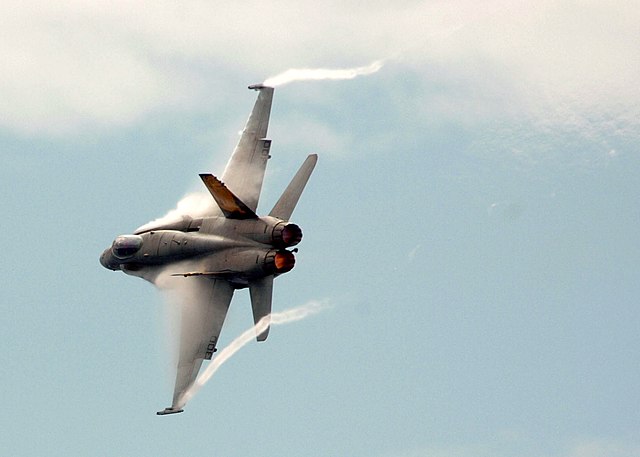Wingtip devices are intended to improve the efficiency of fixed-wing aircraft by reducing drag. Although there are several types of wing tip devices which function in different manners, their intended effect is always to reduce an aircraft's drag. Wingtip devices can also improve aircraft handling characteristics and enhance safety for following aircraft. Such devices increase the effective aspect ratio of a wing without greatly increasing the wingspan. Extending the span would lower lift-induced drag, but would increase parasitic drag and would require boosting the strength and weight of the wing. At some point, there is no net benefit from further increased span. There may also be operational considerations that limit the allowable wingspan.
The Airbus A350 wingtip device
The Ha 137 prototype aircraft, fitted with vertical wing extensions, c.1935–1937
Heinkel He 162A with Lippisch-Ohren wingtip devices
Winglet on KC-135 Stratotanker with attached tufts showing airflow during NASA tests in 1979–1980
Wingtip vortices are circular patterns of rotating air left behind a wing as it generates lift. The name is a misnomer because the cores of the vortices are slightly inboard of the wing tips. Wingtip vortices are sometimes named trailing or lift-induced vortices because they also occur at points other than at the wing tips. Indeed, vorticity is trailed at any point on the wing where the lift varies span-wise ; it eventually rolls up into large vortices near the wingtip, at the edge of flap devices, or at other abrupt changes in wing planform.
Modern airliners often feature slender wings and wingtip devices
Vortices shed at the tips and from the leading-edge extensions of an F/A-18
Canada geese in V formation
A NASA study on wingtip vortices, illustrating the size of the vortices produced.








